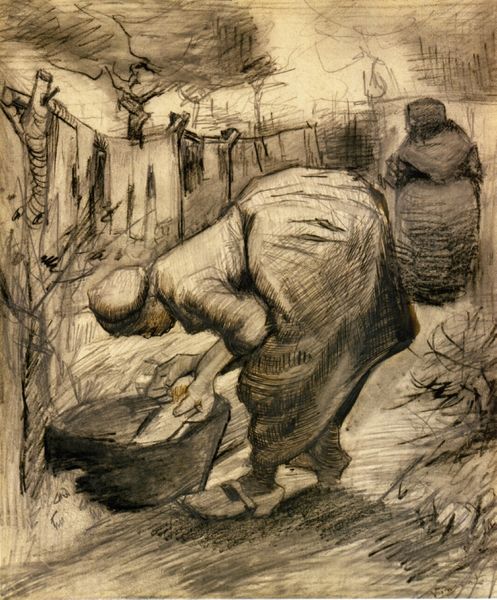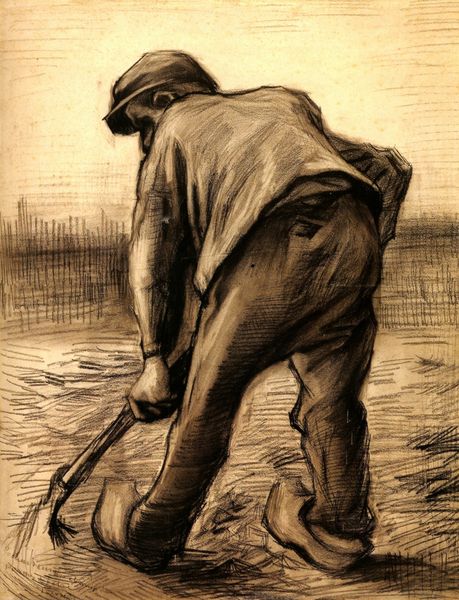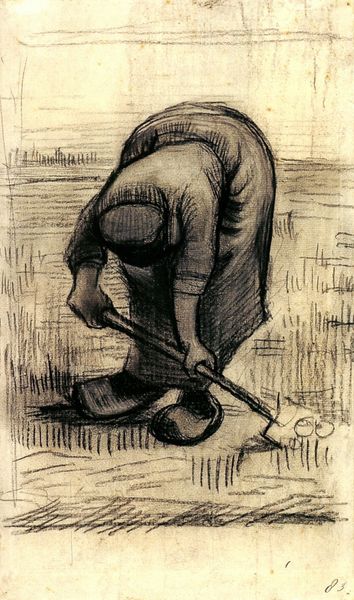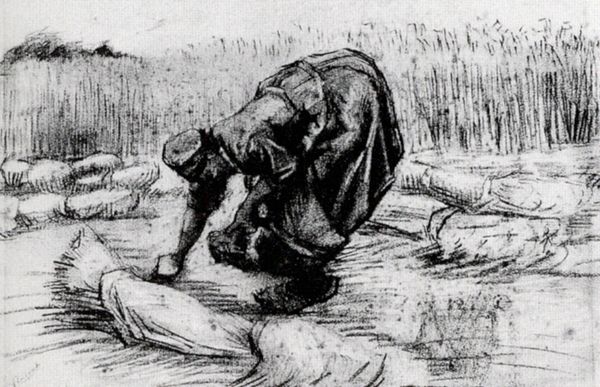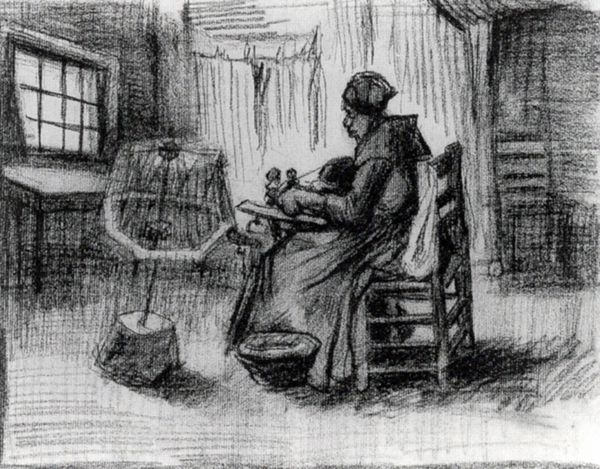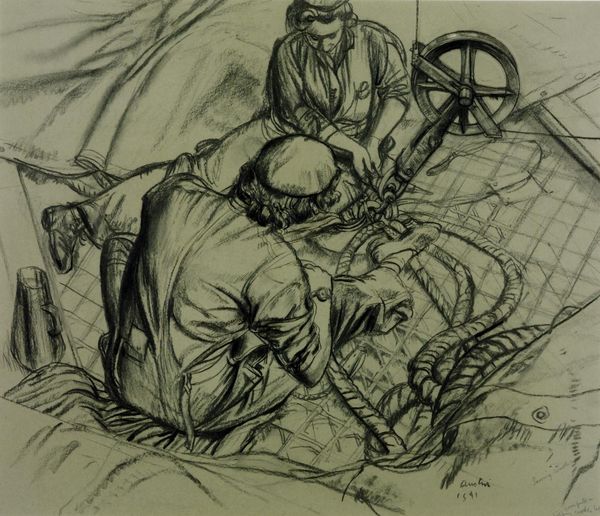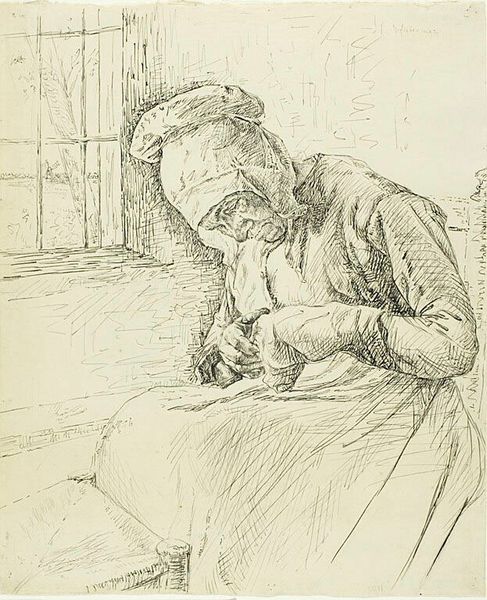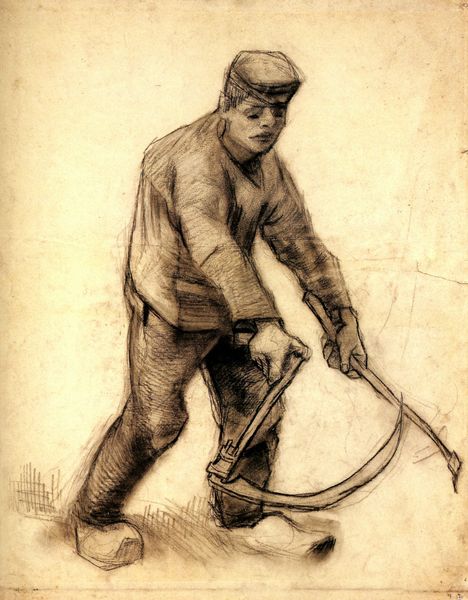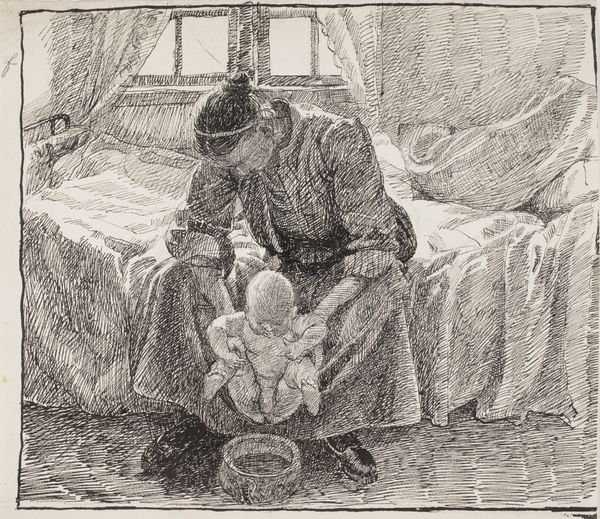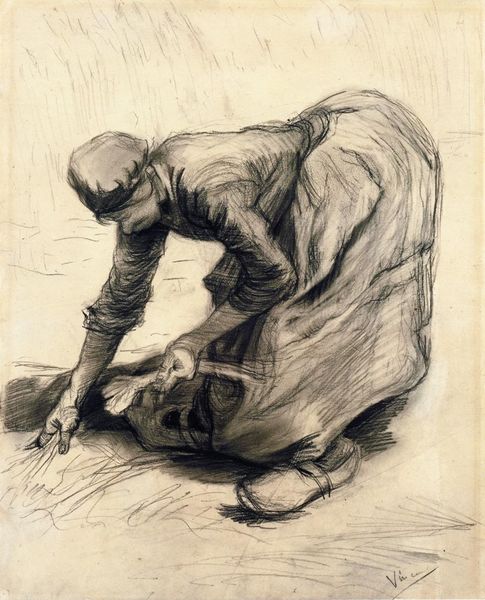
drawing, pencil, graphite, charcoal, pastel
#
portrait
#
drawing
#
impressionism
#
pencil sketch
#
landscape
#
charcoal drawing
#
figuration
#
charcoal art
#
pencil drawing
#
pencil
#
line
#
graphite
#
portrait drawing
#
genre-painting
#
charcoal
#
pastel
#
post-impressionism
#
charcoal
#
realism
Copyright: Public domain
Curator: Vincent van Gogh's drawing, "Peasant, Chopping," made in 1885 and housed at the Kröller-Müller Museum, offers a stark glimpse into rural life. The scene is rendered in pencil, with touches of charcoal to add depth. Editor: It’s immediately striking how somber the sketch appears. The stark use of light and shadow lends a heavy feeling, amplified by the hunched figure of the peasant, totally absorbed in his task. Curator: Indeed. Beyond the immediate impression, it's key to recognize that van Gogh’s representation of laborers often carried symbolic weight. Peasants, for him, represented a primal connection to the land, embodying a hard-won authenticity lost in modern society. The image evokes centuries of the same act. Editor: Absolutely, and from a formal standpoint, observe the dynamism achieved with such simple means. Van Gogh’s short, sharp lines create a visual rhythm mirroring the chopping motion itself. See how the lines around the figure contrast the sharper, vertical marks composing the house. Curator: And consider the location. The drawing has ties to Nuenen, where van Gogh lived and worked among peasants. There’s a powerful identification here, reflected in his many works showing their dignity and labor. Think of his later work in mental hospitals where labor and mental health came together, and he made images of workers there, too. Editor: True. You see here a deliberate use of distortion too, that really pulls at our attention; notice how the peasant’s form almost blends into the ground, reflecting the artist’s focus. There is also the stark difference between this subject and the lighter lines of his landscapes. Curator: Exactly. Ultimately, the drawing can be seen as part of a larger conversation in van Gogh’s oeuvre about labor, authenticity, and the human condition. Editor: And structurally, this work masterfully employs line and shading to convey a deep sense of humanity amidst hardship. It's quite moving, really.
Comments
No comments
Be the first to comment and join the conversation on the ultimate creative platform.

